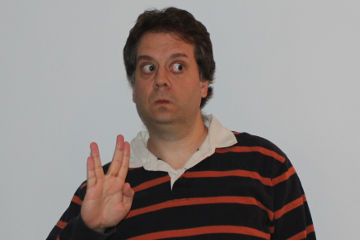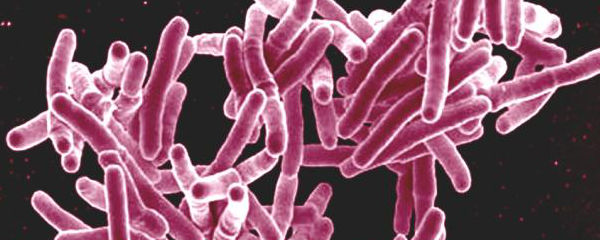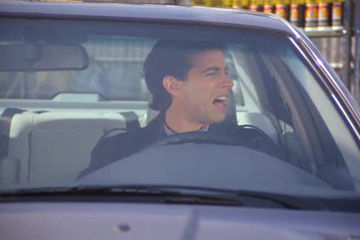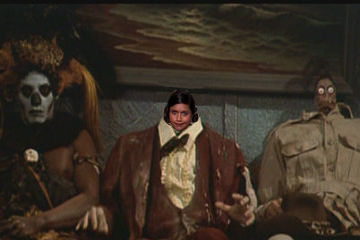What I’ve Learned:
“Absolute zero: where the temperature itself is strange and unusual.”
You may think you’ve experienced extreme cold. Maybe you accidentally swallowed a whole popsicle once. Or walked into a blizzard with your fly unzipped. Maybe you have a regular bridge game with Betty Draper, April Ludgate and Cruella de Vil.
That’s super. But none of those things compare with absolute zero.
Absolute zero is a theoretical state of matter in which the enthalpy and entropy of a gas are at their lowest possible values. This sounds complicated, but “entropy” and “enthalpy” just mean the amount of energy in the system, and the disorder of that system.
(I can never remember which is which, because the words sound too much alike.
I also mix up Mindy Kaling with Michael Keaton. Which makes reruns of The Office pretty confusing — and Beetlejuice ten times scarier.)
In more familiar terms, absolute zero would be -273.15° Celsius, or -459.67° Fahrenheit, either of which will shrink it right up inside you in a hurry. It’s also zero Kelvin, which is a lot easier to remember. On the other hand, it’s 288 Kelvins outside right now, which is approximately zero help in telling me whether or not I need a coat. Or to zip up my fly.
(Notice that in the Kelvin scale, there are no degrees. That’s because in extremely cold temperatures, that little circle thingy folds completely in on itself and disappears.
See? When you’re flirting with absolute zero, even the measurement units get shrinkage.)
While absolute zero isn’t physically possible to achieve — stupid sexy laws of thermodynamics — you can get pretty close. As in, trillionths of a Kelvin close. Scientists can do amazing things with window fans and ice cubes, apparently.
And when they do, spooky quantum mechanical things start happening.
One of these is superconduction, where electrical resistance in supercooled materials suddenly drops to zero. Another is superfluidity, where viscosity gives up in the cold and goes home. Weirdest of all (and sometimes superfluid) are Bose-Einstein condensates, an entirely distinct state of matter which was first predicted by Albert Einstein and a pair of surround-sound speakers.
(I kid, I kid. Bose was an amazing guy — self-taught, genius and deservedly celebrated. Maybe I should have said “first predicted by Satyendra Nath Bose and a subpar bagel chain”.
Or neither? Probably neither. Moving on.)
Oddly, it’s possible to create a system with a temperature below absolute zero. Oddlier, this system is not only “hotter” than it was before, it’s also hotter than anything else in the universe, based on the physics of heat transfer.
I’d like to tell you this is just like freezer burn. I would. But I don’t think it’s anything like freezer burn, and I have no idea how it works. (And some scientists challenge whether it’s true at all.)
Maybe science thermometers are circular, so the bottom of the scale connects back to the top? Like how some people are so ugly, they’re attractive? I don’t know. Ask an ugly quantum physicist.
So the next time you find yourself trapped in a walk-in freezer (244 Kelvins), sunbathing in Antarctica (190 Kelvins) or drifting in the cold vacuum of space (2.73 Kelvins), just remember that it could be worse. It could be absolute zero.
Well, not quite absolute zero. But really, really close.





